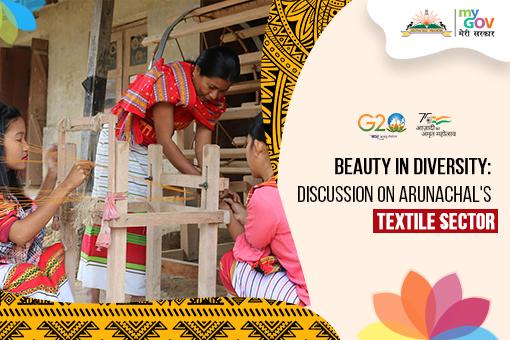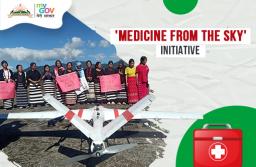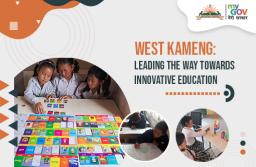Arunachal Pradesh traditionally known for its mesmerizing landscape is also home to a rich textile and handicraft industry. And because the state houses more than 20 major tribes and 100 sub-tribes, it is known for its diverse range of handloom and handicrafts, which are a reflection of the region's rich cultural heritage and traditional practices.
Handloom & Weaving: The handloom weaving industry is a significant source of employment in Arunachal Pradesh. The state is renowned for the excellent handmade textiles crafted by skilled weavers. The different tribes of Arunachal Pradesh weave using a variety of methods and designs to produce a wide range of textiles. Every tribe in the state has a distinctive weaving technique that is passed down from generation to generation. Each piece is distinctive and a testament to the weavers' abilities owing to the elaborate designs and patterns used in the weaving procedures.
The handloom weaving industry has enormous potential in Arunachal Pradesh, and many organizations and government bodies are working towards preserving and promoting this traditional craft. The state government has established a Handloom and Handicrafts Development Corporation to provide financial assistance, training, and marketing support to the weavers. The corporation also provides raw materials, looms, and other equipment to the weavers to create quality products.
Handicrafts: Arunachal Pradesh is also known for its diverse range of handicrafts, ranging from woodcarving to basketry. Each tribe in the state has its unique craftsmanship, creating beautiful products that showcase their traditional practices and cultural heritage. Some of the popular handicrafts of Arunachal Pradesh include bamboo and cane products, pottery, woodcarving, and beadwork. Pottery is another traditional craft that has been practiced in Arunachal Pradesh for generations. Woodcarving is a traditional craft that is practiced by many tribes in Arunachal Pradesh with beautiful patterns and beadwork is another popular craft in Arunachal Pradesh and is typically used to decorate clothes, bags, and jewelry.
Marketing and Export Opportunities:
Arunachal Pradesh's textile and handicraft industry has great potential to grow and expand. The state government has taken many initiatives to market and promote these crafts, particularly at the national and international levels, after realizing their full potential. The government has established several emporiums that sell these products and also participates in various trade fairs and exhibitions to showcase these crafts.
Furthermore, several NGOs and private organizations are working to create long-term employment opportunities for local artisans. These organizations train and empower artisans to produce high-quality goods while also assisting them in gaining access to markets.
MyGov Arunachal Pradesh invites citizens to share their valuable opinion and suggestions on how we can promote and market these local crafts to increase their reach and visibility.













BrahmDevYadav 2 years 5 months ago
What are the types of eco textiles?
Hemp, wool, organic cotton, soy silk, bamboo fabrics, jute, corn fiber etc are considered as eco-friendly fabrics due to their availability from nature with out any harmful effects of chemical or toxics. Moreover as compared to other synthetic fibers they are available in a cheaper rate.
BrahmDevYadav 2 years 5 months ago
What are the six categories of textiles?
Textiles are classified according to their component fibers into silk, wool, linen, cotton, such synthetic fibers as rayon, nylon and polyesters and some inorganic fibers such as cloth of gold, glass fiber and asbestos cloth.
BrahmDevYadav 2 years 5 months ago
What are the eight uses of textiles?
1.Bags and other means of carrying objects.
2.Balloons, kites, sails, parachutes. Earlier aero planes used cloth as part of the
construction.
3.Clothing.
4.Flags.
5.Furnishings and other home accessories.
6.Geotextiles.
7.Industrial and scientific uses like filtration.
8.Nets,Rugs and carpets.
BrahmDevYadav 2 years 5 months ago
What are the five focus areas of textiles?
1.Functional.
2.Items designed for a specific purpose that may include examples from the following focus areas:- apparel, furnishings, costume, textile arts and non-apparel.
BrahmDevYadav 2 years 5 months ago
How can we increase awareness about fashion waste?
The most important aspect is to talk with people, to raise your voice and to raise awareness. Contribute step by step and win more and more like-minded, by pointing out the unfortunately long-lasting design problem, by also offering new aspects and insights of fashion consumption.
BrahmDevYadav 2 years 5 months ago
What textile is best for the environment?
Generally, natural fabrics like organic cotton and linen (made from plants) and Tencel (made from sustainable wood pulp) are more sustainable than man-made fabrics like Polyester and Nylon.
BrahmDevYadav 2 years 5 months ago
Why textile industry failed in India?
The international prices of yarn shot up to reach unviable levels and consequent increase in garment prices caused serious loss of demand at the retail levels. By the time yarn exports were allowed after 3.5 months, India had accumulated 600 million kg and there was a 20% demand destruction in volume terms.
BrahmDevYadav 2 years 5 months ago
Which is the largest textile city of India?
Bhilwara has emerged as India's largest manufacturer of fabrics. Also known as the Textile City of India, it is a famous industrial town of Rajasthan.
BrahmDevYadav 2 years 5 months ago
What is the future of textile sector?
The demand for textile will riseby manifold as the global population will touch the 8.1 billion mark by 2025.
BrahmDevYadav 2 years 5 months ago
What is one of the major problems faced the textile industry?
1.Lack of Plant and machinery technology.
2.Competition from the man made fabrics and synthetics.